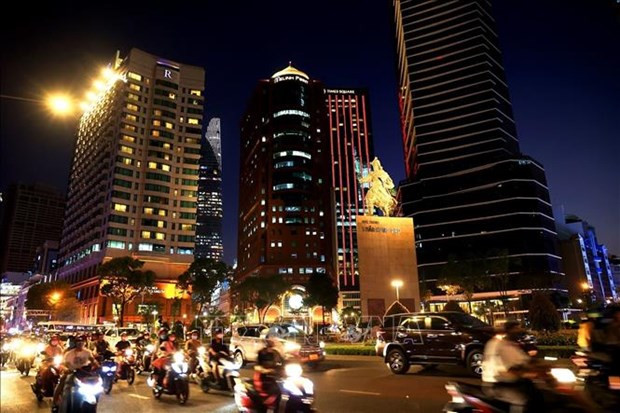
Savills data reveals that F&B, sports, and cosmetics retailers led leasing activity across the region in the second half of 2023. Outdoor retailers are also expanding, while entertainment and experience-based brands are taking up more space in shopping centers.
According to the company’s statistics, retailers in F&B (food and beverage), sports and cosmetics led leasing activity across the area in the second half of 2023 and the first months of 2024. Retailers in the outdoor sector also expanded, while entertainment and activity brands took up more space in shopping malls. Luxury brands are investing in concept stores and more experiential retail establishments.
Tran Pham Phuong Quyen, senior manager of retail leasing services at Savills Ho Chi Minh City, said high-end brands want stores in core areas with existing concentration of luxury brands (luxury clusters). This reflects the strong appeal of these areas to potential luxury brand customers.
However, she noted that retail spaces in existing luxury clusters are scarce, which results in high competition among brands.
"This phenomenon of seeking clustered locations in District 1 on main streets and locations reflects the retail cluster effect. When there are many brands and stores in the same area, the pull is greater, and footfall tends to be higher. These stores benefit from access to customers," Quyen said.
According to her, the development of new projects in non-central District 1 could pose a challenge because it takes time for new projects to build a reputation and attract customers. However, luxury brands often prefer to locate themselves in areas with an established customer base.
New projects take time to build reputation and attract customers, while brands often prioritise choosing areas that already have a certain number of customers, she added.
Regarding the retail space rental market in Ho Chi Minh City, Savills Vietnam noted that retail activity in the city was stable with occupancy rates remaining unchanged at 92.5% quarter-on-quarter.
Landlords have phased out rental discount programs. Leasing transactions totaled 1,688sq.m of floor space, with the suburban area contributing the largest take-up of 2,040sq.m, mainly from F&B tenants and the conversion of properties from office to retail use.
Expanding brands had a 67% share of total transactions; and deals exceeding 1,000 sqm of floor space accounted for 8%. By category, fashion had 50% of transactions, followed by F&B with 20%, and health and beauty with 15%.
Giang Huynh, Deputy Director of Savills Research & S22M, held that the HCM City retail market is on a strong growth trajectory driven by several positive factors, including rising income and population prospects, continuously improving retail quality, and economic development.
According to Statista, a German online platform that specialises in data gathering and visualisation, the Vietnamese luxury goods market had revenue of 957.22 million USD in 2023. Revenue was primarily generated by products like perfumes and cosmetics, fashion, leather goods, and luxury watches and jewelry. The industry is forecast to generate revenue of $992.20 million in 2024, up 3.65% year-on-year.
The annual growth of luxury goods in Vietnam was forecast at 3.10% between 2024 and 2028, fueled by the country’s rising wealth, expanding middle and upper classes, and rising disposable incomes. This landscape has powered the demand for luxury products.
According to Savills's Q1/2024 real estate market report, several international luxury brands entered the Vietnamese market in recent months, including fashion, watch, and jewelry brands like Fendi, Cartier, and Loewe./. VNA